|
 570 3rd Ave # 219 570 3rd Ave # 219
Bethel, AK 99559
(907) 543-1541
 625 C Street
Anchorage, AK 99501 625 C Street
Anchorage, AK 99501
(907)929-9200
anchoragemuseum.org
|
|
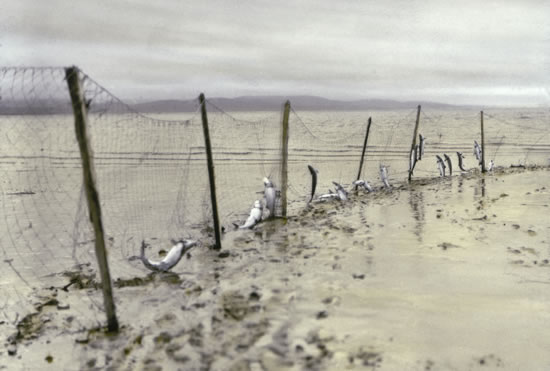 |
Courtesy, National Museum of the American Indian, Smithsonian Institution,
L2318, Dr. Leuman M. Waugh, 1935 |
A person could walk out and pick fish from this set net at low tide without using a boat.
|
 |
Aguutekun civvluku kuvya anguarturluteng atercetaqluteng. Ataucicaqliameng-llu-gguq anguarutmek teguluki imkataarluki.
Tua-i-llu teguqataarluku neqa cali. Ayagcetengnaqenritem ugaan tua-i mulngaku'urluku kaugturluku qamiqurrakun nutaan ekluku. Neqaitaqan-gguq, tuaten anguarturluteng neqsulallermeggni.
Using a canoe, they'd paddle and set the net and drift downriver. And when a salmon finally got caught, they'd take the end of the net and start pulling it in carefully.
And when they got to the fish they'd take it off the net. Trying not to lose it, they'd carefully take it and hit it on the head and pull it into the canoe. They say that was what they did when fish were scarce, when they fished by paddling.
--Wassilie Evan, Akiak |
Fishing was a laborious task, and so was making the tools to catch them. The amount of sinew or willow bark needed to make even a small net took weeks to prepare. Few owned more than one net, but untied and retied their nets during the season, as different-sized fish became available.
|
Taryaqvagcuun King Salmon Net
 |
|
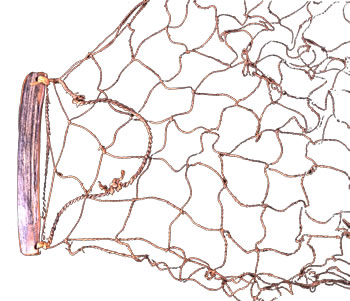
|
King Salmon net made of willow bark.
Wassilie Berlin said: "When they made gill nets, they made their depth shallow. Sometimes a fisherman might catch a total of twenty king salmon in a season. People considered him to have caught plenty. Their work was quite incredible." |
| J. A. Jacobsen, 1882, Ethnologisches Museum Berlin IVA4288 |
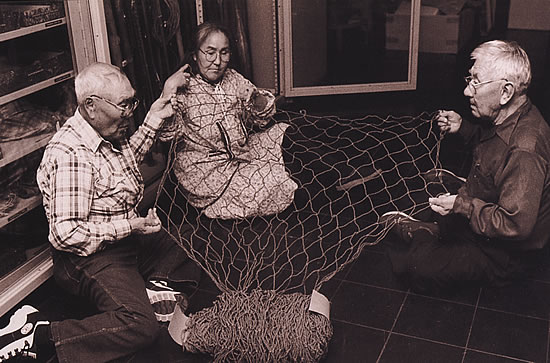 |
Dietrich Graf |
Wassilie Berlin, Marie Meade, and Paul John examine the willow-bark net at the Ethnologisches Museum Berlin. Such nets had to be treated carefully in cold weather or they would freeze and break.
|
Kuvyaq Sinew Net
 |
|
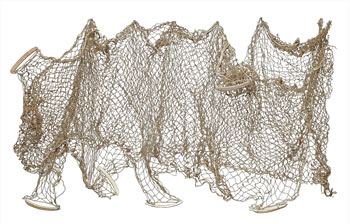
|
Kuvyaq/Sinew net with sinkers and floats. Phillip Moses said: "After they used sinew nets, they hung them up as soon as they returned to the village. If they aren't hung right away, they rot." |
| Yupiit Piciryarait Cultural Center and Museum 95.1.56 |
| |
Lugluqussaak Net Floats

|
| Bird-shaped net floats both to support the net and attract waterfowl. |
.jpg) |
| |
J. A. Jacobsen, 1882, Ethnologisches Museum Berlin IVA4075, IVA4078 |
Qilagcuutek Net Shuttles
 |
|
.jpg)
|
Net shuttles from Andreafski, the large wooden shuttle for making seal and beluga nets, and a bone fishnet shuttle with incised net design. |
| 1890s, Sheldon Jackson Museum IIB146, IIB143 |
| |
Qilakeggutet Net Gauges

|
Seal Net Gauge, King Salmon net gauge, and Whitefish net gauge.
Phillip Moses said: "Making nets was lots of work. Back then there weren't many nets, even though fish were plentiful." |
.jpg) |
| |
National Museum of the American Indian, Smithsonian Institution 4/5319; C. M. Garber, 1925, 24/2813; I. C. Russell, 1908, 2/432 |
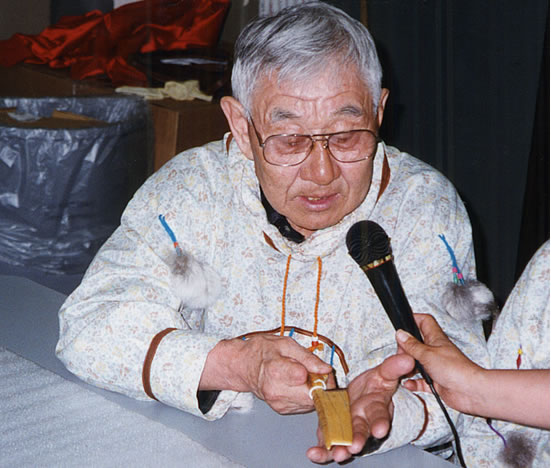 |
Courtesy, National Museum of the American Indian, Smithsonian Institution,
L2318, Dr. Leuman M. Waugh, 1935 |
Paul John shows how the seal-net gauge measures from the tip of his middle finger to the base of his palm. Paul also showed how the king-salmon-net gauge measured from the center of his palm to the tip of his middle finger, whereas the whitefish net gauge measured just from the base of his thumb to his thumb knuckle. Ann Fienup-Riordan
|
Next |
|

